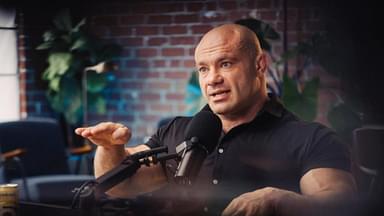While gaining muscles is one of the many fitness goals that several people hit the gym for, there’s not one fixed approach to it. Individuals can experiment around with various routines, intensities, and recovery periods to determine their balanced path. Dr. Mike Israetel has been talking on this subject in detail lately and in his last video, he focused on intensity.
One might find it tricky to zero in on a certain amount of intensity to exert while performing exercises. Therefore, Dr. Israetel listed some points to check off while aiming for gains and going all in.
In general, the first parameter we consider is the relative effort exerted in performing the exercise and depends on one’s best possible attempt. This situation also leads to taking into account one’s ‘reps in reserve’, which determines the approximate number of reps one has left in them before not being able to perform any to a full range of motion.
Low and high relative effort determine the type of gains one could develop depending on how challenging they make things for themselves. However, Dr. Israetel warned fitness enthusiasts that while pushing to failure might seem like the ultimate answer, recovery is necessary. If one were to push to failure in multiple sets across various days, then it might be difficult to sustain the gains for long.
“…we earn our progressions by demonstrating good, stable, unchallenged technique during the set. If your technique falters or waivers, next week you do the same workout except you make your technique as perfect as possible.”
Certain mistakes that fitness enthusiasts often make in this process are either not being able to find the number that would send them to failure or going to failure frequently. Dr. Israetel emphasized working on the instincts and determining the failure range and subsequent rep that would push to the edge instead of being uptight about the numbers.
“You don’t need that high level of precision. You just need to know s*t is pretty go**n hard around to our works.”
In the end, he pointed out one of the most crucial factors that might help differentiate between pushing further versus stopping from overtraining. Pain in the muscles, according to Dr. Israetel, was a proxy for the stimulus that simply indicates that the muscle group is being targeted. Pain shouldn’t be a reason to stop unless one physically cannot go any further.
Dr. Mike Israetel addresses the issue of stagnant reps
Sometimes, it is possible to come across a situation where even heavier weights are not helping in the gradual progression of the number of reps. Instead of keeping on at it, Dr. Israetel had an alternate solution that could help one jump from a plateau to a spike.
Gains need consistent stimulus, and sometimes the issue could just be the heavier weights, that hinder progress. Therefore, he asked fitness enthusiasts to deload, reduce the number of weights, shuffle up the exercises, and take things back up a notch. This step could help the body get back on a progressive phase and stimulate muscle growth.





